Steam locomotives are fondly remembered for their essential role in the Industrial Revolution and are seen as one of the greatest inventions of all time. We certainly think so! As our founder, Marcus Robertson, often says, a steam engine is the closest thing man has created to a living and breathing object.
But how do they work? 🤔
You need three main elements: fuel (usually coal), water and a footplate crew consisting of a driver and fireman.
A steam locomotive is essentially a large energy converting machine. It takes the heat energy from burning a fuel, and uses this to boil water to create exceptionally high pressure steam. This pressure energy in the steam is then again converted in the locomotives cylinders from pressure to kinetic energy in the form of motion, which is the energy that pulls our trains along.
That was the scientific bit – but how does it actually happen? By far the biggest and most important part of a steam locomotive is its boiler. This is where coal is burnt to release vast quantities of heat to boil the water to make the steam. Most of the steam locomotive boilers in the UK operate between 220 – 250 pounds per square inch (psi) of pressure, which is around 8 times the pressure of the average car tyre! The boiler is fitted with at least two safety valves which are set to ‘lift’ and allow steam pressure to escape which stops the boiler from building up excessive pressures. These are fitted on the top of the locomotives boilers and lift often suddenly with large clouds of steam and noise escaping. This is perfectly normal and they are automatic.
One of our steam locomotives working hard on one of our trips can boil up to 2,000 gallons of water an hour – that’s equivalent to over 6,000 full kettles! – with a fire that burns white hot. The coal is burnt inside the boiler in a furnace called a firebox, with the fire burning on a grate with air gaps which allow oxygen through the burning coal, which helps it reach the high temperatures needed. On one of our day trips a steam locomotive can burn typically 12 tonnes of coal, with a refill being taken at our mid-point destination.
Coal and water for most of our steam locomotives are stored in the tender, which is the truck behind where the crew drive the engine from. This is full of water and coal. For example, our flagship locomotive ‘Mayflower’ carries nearly 8 tonnes of coal and 4200 gallons of water – that’s nearly 20 tonnes of water carried in the tender alone when full!
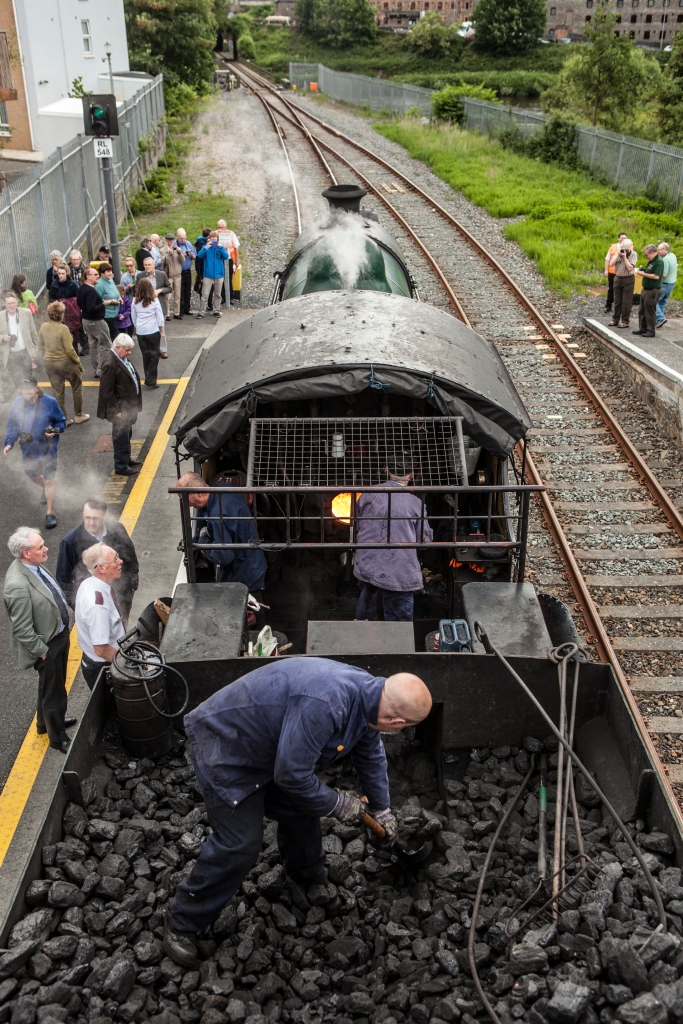
Water is put into the locomotive boiler under high pressure using a steam powered device called an ‘injector’. This device uses steam from the boiler to draw water from the tender tank and inject it into the boiler at an even greater pressure than what the boiler is operating at. The science of that is quite baffling and could feature on a blog post of its own! It is of paramount importance that the water level in the boiler is maintained at a high level, not only to keep producing steam, but because the white-hot fire is quickly capable of melting the copper firebox in which it is contained. The water level can be checked in the ‘gauge glass’ which shows where the level of the water is in the boiler. In the picture below you can see these (there are two, as they a vitally important equipment) and are seen in the top middle of the picture with the black and white stripes. The water can clearly been seen where the water refracts the black diagonal stripes to go the other way.
The fire is surrounded by a ‘water jacket’ on all sides and above it to take the heat energy away, should this water jacket not keep the firebox ‘cooled’ it would quickly melt. For this reason a crew member is responsible for the operation of the locomotive’s boiler, ‘the fireman’ and it is their job to keep the boiler pressure, water levels and fire temperature up. This is an exhausting job, especially shovelling a tender load of coal into such a hot fire. We usually change our crew at the mid-point of our trips for this reason.
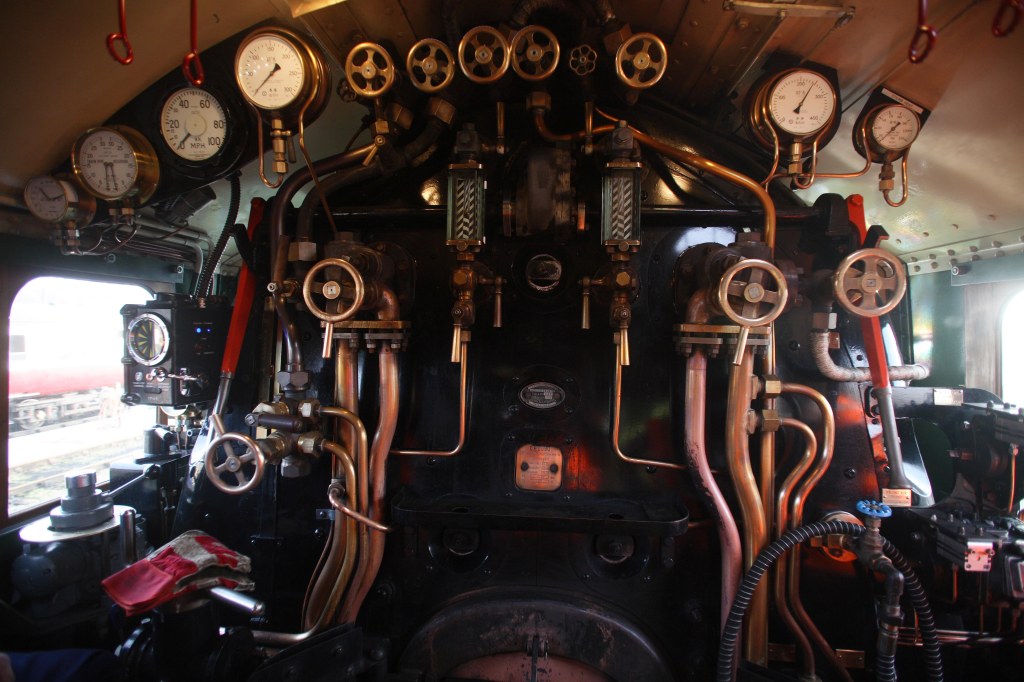
The driver is in charge of the next part of the locomotive; its cylinders. The driver’s main control is the ‘regulator’ which allows the high pressure steam to escape from the locomotive’s boiler and enter the cylinders. These are the big red levers shown in the picture above, one on each side of the engine. The cylinders are the large metal blocks at platform level at the front of our engine and there is one on each side. Some more powerful locomotives have another 1 or 2 cylinders also inside the engine in addition to those on the outside. The cylinders work like a car engine, with high pressure acting on a piston generating large pushing and pulling forces on the piston rod, which can be seen coming out of the back of the cylinders, which connect to the engines ‘driving wheels’. ‘Mayflower’s’ cylinders are large, at 20 inches (508mm) diameter and they move back and forwards by 26 inches (660mm). Unlike a car engine, steam locomotives cylinders have pressure admitted to both sides of the piston, with steam pushing the piston in one direction, and then more fresh steam admitted on the other side to push it back again. It is this constant cycling of used steam being pushed out of the cylinders of steam locomotives that give the characteristic “chuff” noise! Like feet on a bike pedal, a steam locomotive piston pushes a crank through 180 degrees to cause a rotary motion, before the return of the piston in the cylinder ‘pulls’ the crank back. For each full cycle of the piston, the big driving wheels on a steam locomotive have turned through one complete turn.
The cylinders are set to operate at different points of a wheel turn out of phase to avoid the locomotive getting ‘stuck’ when the crank is at each end; imagine the large driving wheel as a clock face with the first cylinder pushing at 12 o’clock, the second at 3 o’clock, the first cyclinder now on its way back at 6 o’clock and finally the second cylinder on its way back at 9 o’clock before the cycle continues over again. This allows a more even distribution of power too, as the wheels turn and gives the 4 “chuffs” for each wheel turn.
Unlike a car, a steam train has no gears – it drives directly onto the wheel. This is why steam trains take a long time to get up speed – imagine pedalling a bike from stationery start when in high gear! It does mean they can be well suited to fast running if given large wheels. However, this is not always useful as it can lead to lots of wheel spinning when trying to start a long train – this is why steam locomotives that were designed for freight have lots of smaller wheels for extra adhesion and starting heavier trains. Most steam locomotives in the UK have wheels around 6 feet (1.82m) in diameter as a compromise between speed and pulling power, ‘Mayflowers’ driving wheels are 6 feet 2 inches (1.88m). The fast express engines like ‘Flying Scotsman’ have larger wheels of 6 feet 8 inches or (2.03m).
…and that is how a steam engine works! 🚂
Click here to find out about the locomotives we use to power our trips on the UK mainline.
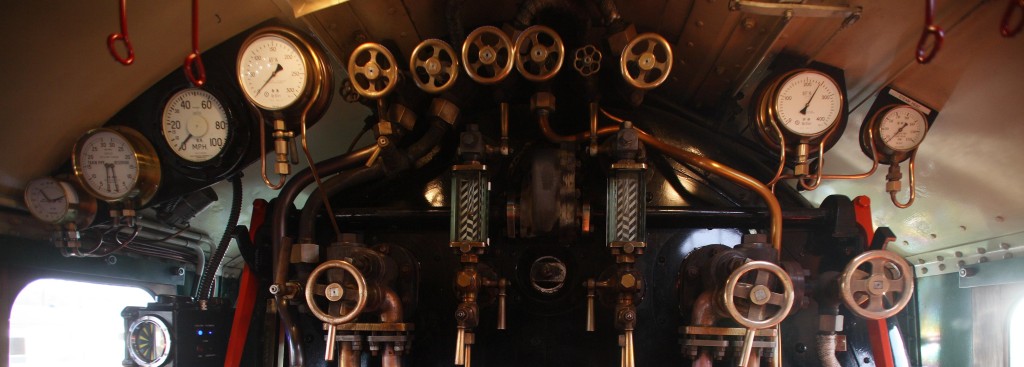

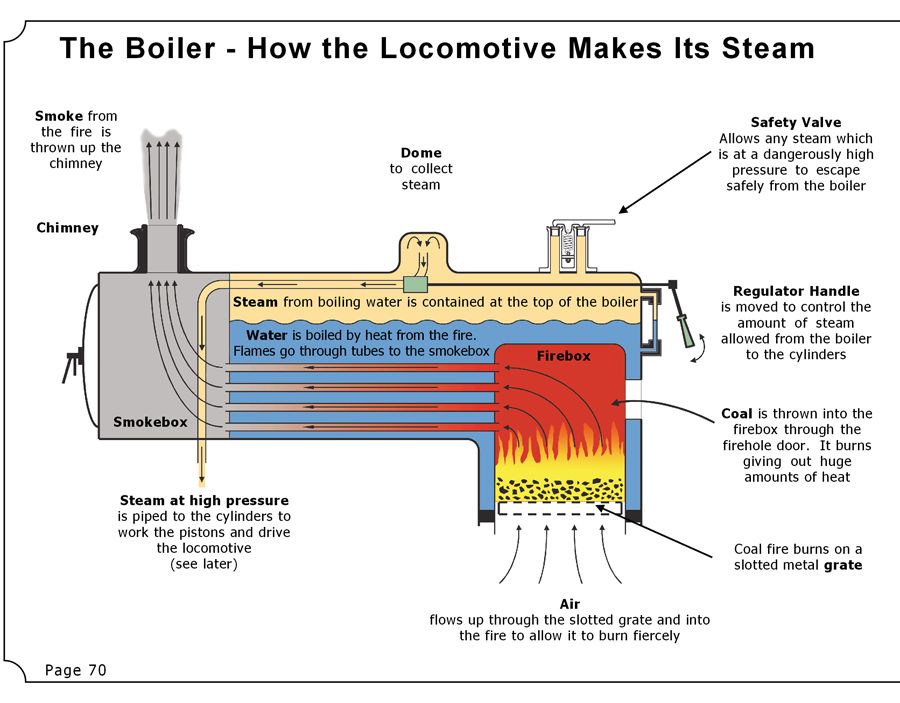
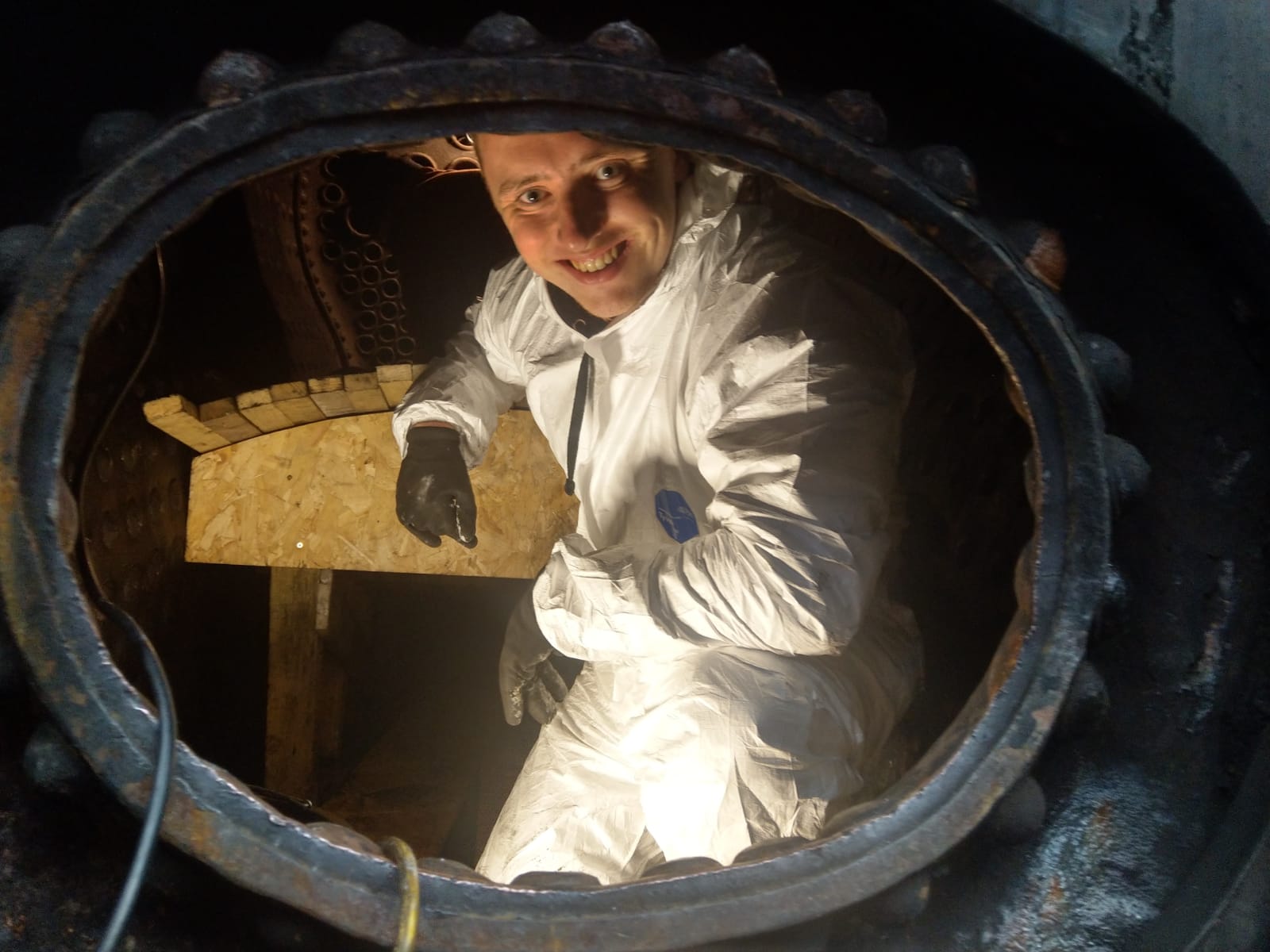
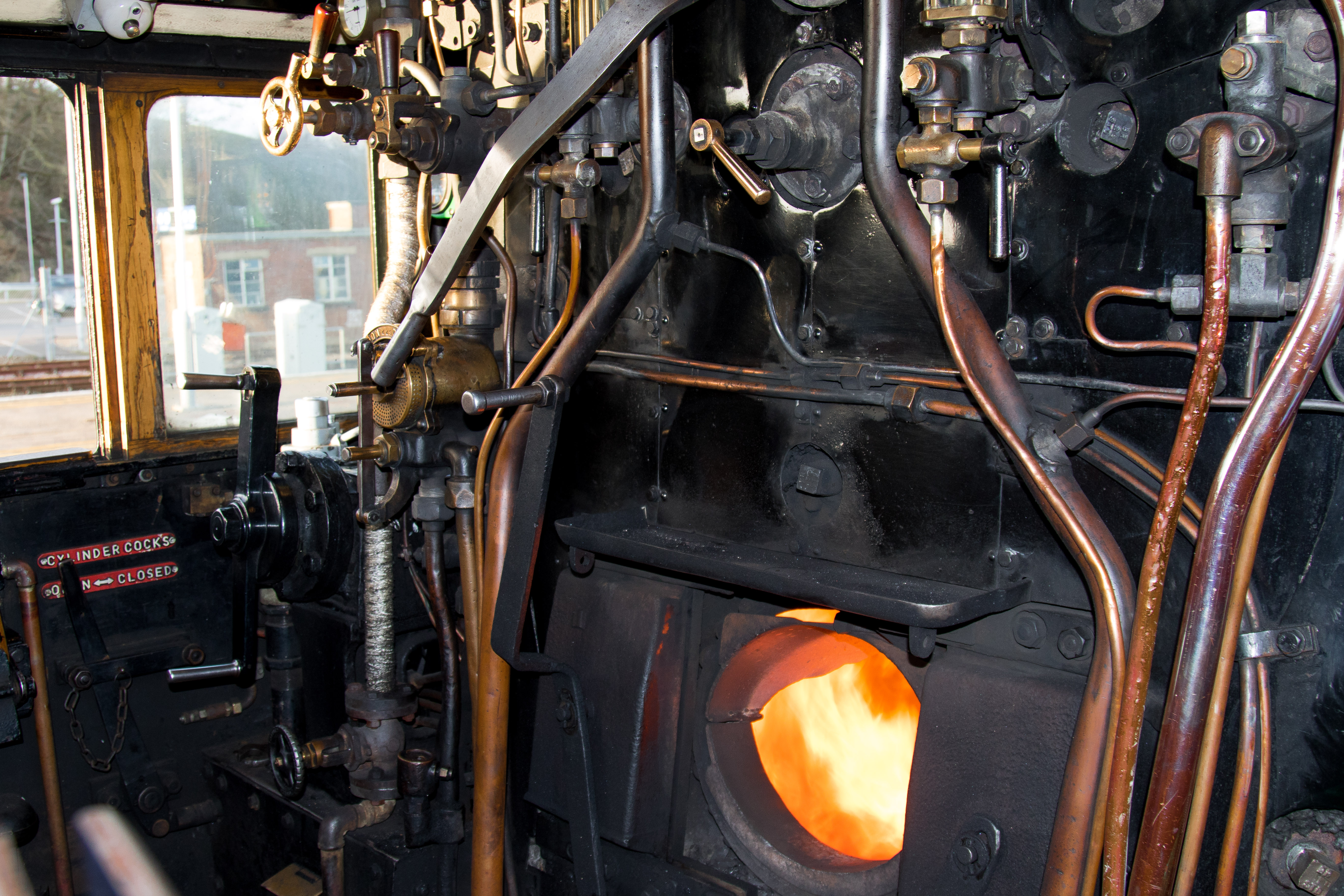
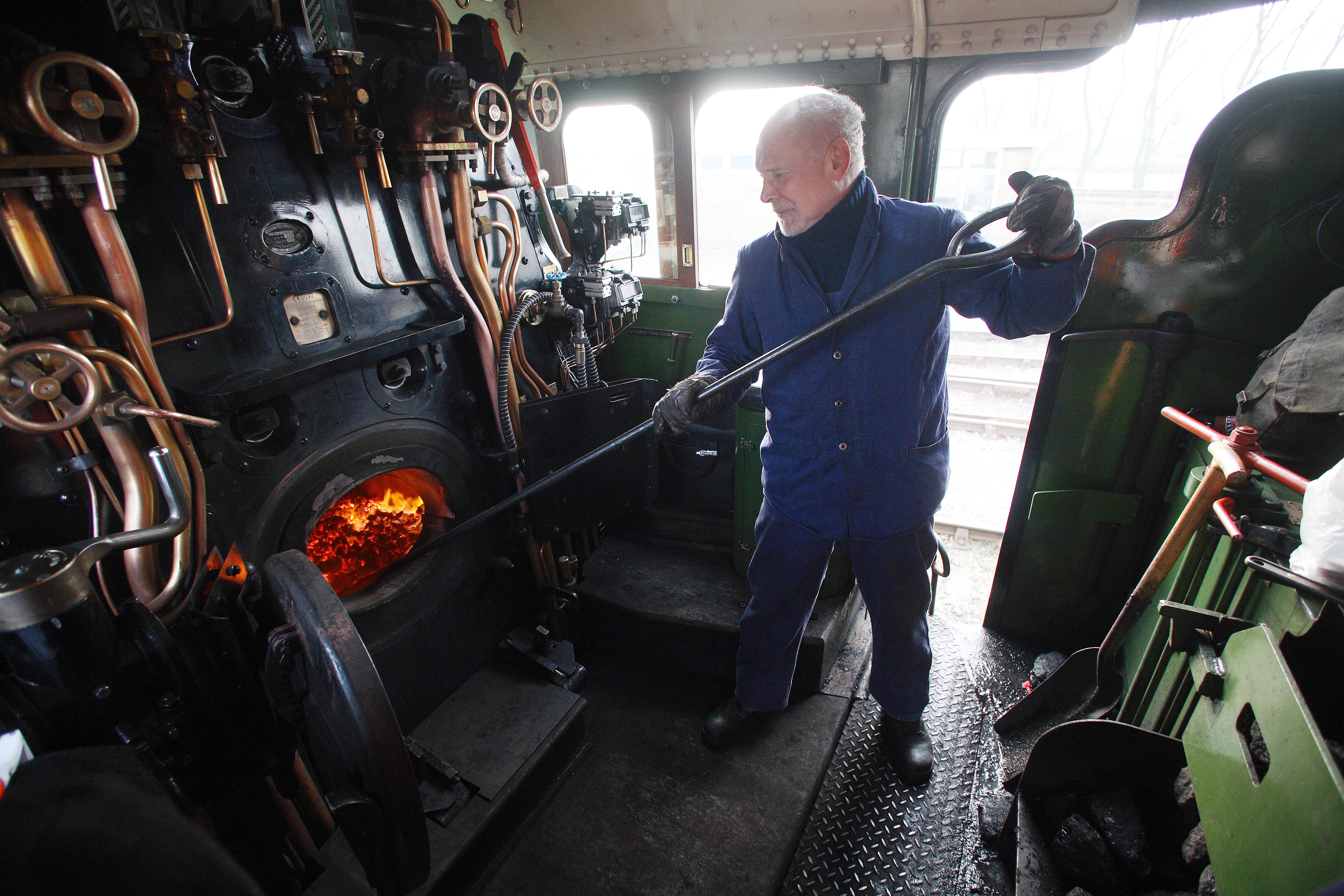
Leave a comment